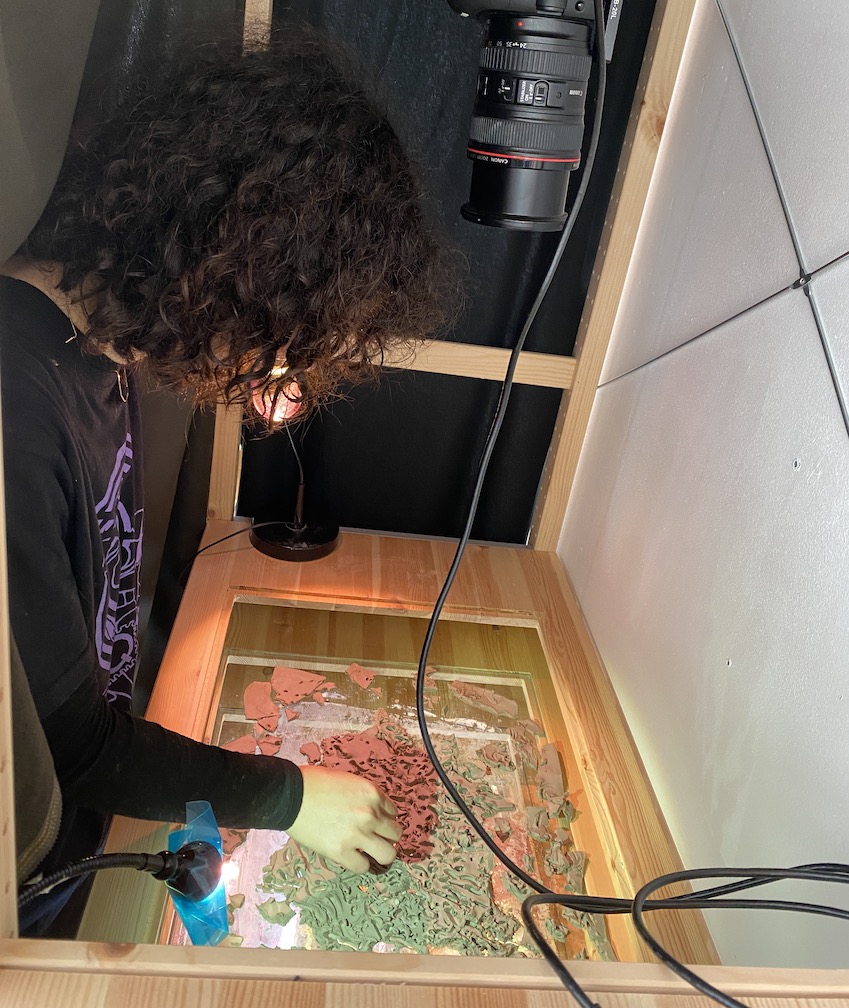Filmwerkplaats experimental animation workshop

Date: 18-19 March (Saturday-Sunday)
Time: 10.30 – 17.30 both days
Location: WORM Filmwerkplaats, Boomgaardsstraat 71, Rotterdam
Costs: € 60,- (in total for two days, this is including film, materials and chemistry)
For members with time management problems there is a limited possibility to follow just one day (reduced costs of 45,-), please let us know by an email to filmwerkplaats@worm.org
In this workshop we will concentrate on 4 different animation techniques namely; multiplane, pixilation, stop-motion and the Adam Beckett (looping) method. Of course we will exploit these techniques in the spirit of the Filmwerkplaats: experimental, on analog film, hands-on and DIY. We will use several of our 16mm Bolex cameras and film with B&W stock; both high-con (25 asa 3378) as camera negative (double-x). For the workshop we will build up different ‘stands,’ both in our lab as in the UBIK theater space, so we can work in small groups simultaneously trying out the covered techniques. We will use partly DIY options to create the necessary devices/stands (so you can easily build your own at home), and play with light effects on objects with regular household lighting.
The covered animation techniques:
Multiplane-stand is a construction consisting of several layers with glass-plates placed in different heights. The tool is used to create depth by placing different elements in the different layers. The camera is mounted above the glass-plates and captures with this position the setup and image as three-dimensional.
Pixilation is an in-camera filmmaking technique where live actors and objects are shot frame-by-frame to simulate movement. This results in an animated-looking world, where a human or living creators, and the things around them, move without being touched. The actual can often appear jerky or smooth, depending on gaps of motion between in each frame.
(Stadsgeest – Orthodogs https://www.youtube.com/watch?v=BsvbbWtHUSs)
Stop-motion is a technique in which objects or ‘stuff’ are physically manipulated in small increments between individually photographed frames so that they appear as if they’re moving when played back at normal speed. Any kind of object or ‘stuff’ can thus be animated.
Adam Beckett (looping) method, Beckett developed a unique technique that involved creating a loop of images that continued to evolve with each loop cycle. In this way a series of drawings, say 12, would be shot, modified and re-shot. So while the final artifacts of the film would amount to only a handful of images, the film itself appears as a growing and expanding abstract loop. (Adam Beckett – Sausage city https://www.youtube.com/watch?v=RKS7N5ZzpI8)
Daphne Rosenthal digs with her camera through sceneries built with all sorts of stuff. Her objects come from unclear origins and have a destination unknown. She manipulates these objects using animation and puppet techniques. They move around, they roll, fall, squeeze and tremble. It seems as though they respond to each other and such tactile movements resonate in our body. Rosenthal uses animation to engender a sense of agency to materials. She works in the zone where life seems to begin, possibly ends and can start anew.
In her latest works Rosenthal uses a multiplane-set with layers of materials in unconventional ways. Moving collages are built up from clay, scraps of paper, fabrics and various small objects. Often photographic footage is added to open up tp questions of cinematic space and its narrative.
Daphne Rosenthal (1979) is an artist-filmmaker who lives and works in Amsterdam (Gerrit Rietveld Academie – VAV – 2008) and has strong ties with Los Angeles (CalArts – MFA Experimental Animation – 2014). Her work has been shown in galleries and festivals internationally.